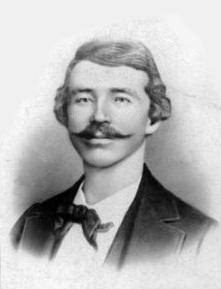Chapter 13
-The Frontier Artist
-George Caleb Bingham (1811-79)
-Carl Wimar (1828-62)
-Schools and Galleries
-Thomas Hart Benton (1889-1975)
-Samuel Langhorne Clemens, "Mark Twain" (1835-1910)
-Eugene Field, "The Children's Poet" (1850-95)
-Kate O'Flaherty Chopin (1851-1904)
-Harold Bell Wright (1872-1944)
-Reedy's Mirror
-Three Important Poets
-The Sound of Music
-Ragtime
-Scott Joplin (1868-1917)
-"I Hate to See De Evenin' Sun Go Down"
-The Louisiana Purchase Exposition (St. Louis World's Fair, 1904)
This chapter introduces some of the great writers and artists, in several fields, in Missouri in the 19th and 20th centuries. Great painters such as George Caleb Bingham and Thomas Hart Benton were know not only as great Missouri painters; they were great American painters. The writers such as Mark Twain, Eugene Field, and Kate O'Flaherty Chopin also gained national attention for their works. Poets such as T.S Eliot also came from Missouri and became world-famous. Even famous musicians like Scott Joplin were Missourians. My oldest aunt has told me the story of meeting Thomas Hart Benton when she was a little girl. She was visiting the Missouri State Capitol with her class and he was painting a mural. She recalls looking at the partially finished mural when Benton came up to her and asked whether she liked it or not. Not knowing he was a famous painter until later, she responded yes to which he asked what was her favorite part of the mural, and typical to many young girls she said her favorite part was the horses, to which he apparently chuckled. My aunt has never been one to lie so I believe the story, which is pretty darn neat. Below I've included a portion of one of Benton's murals in the state capitol that he may have been painting when my aunt met him. Also a picture of Benton painting.
(it is pretty small, I couldn't get it any larger)
Chapter 14:
-Problems with Neutrality
-Election of 1916
-America Enters the War
-War's Impact on Missouri
-Women's Suffrage
-Prohibition
-Politics: Republicans Take Control
-Election of 1922
-Pendergast Machine in Democratic Politics
-1924 Election and the Ku Klux Klan
-Election of 1926
-Election of 1928
-Road Building
-Charles A. Lindbergh: Hero
-Education
-The Economy and Depression
Of al these events: war, elections, fighting for rights, the two sections I found most interesting were Prohibition and the 1924 Election and the Ku Klux Klan. The Klan did not like the change America was experiencing at this time, forces such as urbanization, mechanization, and secularization intruded on their lives. For a period numbers in the Klan were very high but after the election of 1924 the Klan's numbers and influenced declined. People were rejecting the violence and racism inherent in the KKK. Prohibition occurred in 1919 with the passage of the 18th Amendment. My great-grandfather (yes, another family story) owned a tavern in St. Louis. When prohibition came along he ran it secretly out of the same building. To supplement his income he was the chief mechanic for the Cuckoo Gang. The gang earned a reputation for being "fast and willing shooters who would fight anyone, including themselves. Extortion from bootleggers and other gangs, robbery, kidnapping and murder for fun and profit were Cuckoo specialties." He fixed their cars up so that they would be able to out run the police so that they could run liquor and also just simply get away from crimes. By looking at my great-grandfather you would never have thought he would have been involved, even partially, in organized crime, but he did what he had needed to do to provide for his family. The picture below is of the Birger Gang who were associates of the Cuckoo Gang.












